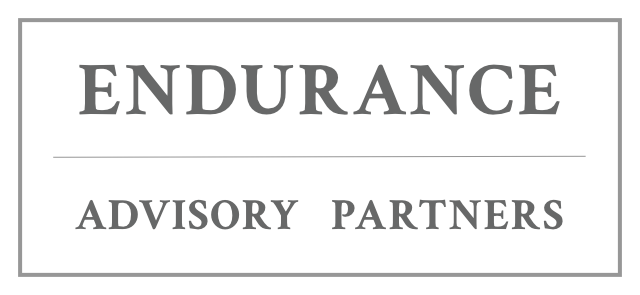STORIES OF IMPACT
/Governor Bowman on Bank Regulation
Governor Bowman on Bank Regulation
As Bowman is now expected to be the FRB Head of Supervision, her recent speeches provide insight into the significant regulatory changes under the Trump Administration.
Maintenance of the Regulatory Framework
• While promoting safety and soundness in the banking system—particularly among community banks—is an important and necessary regulatory objective, we must also be cautious to ensure that the framework does not become an impediment to their operations, preventing them from providing competitive products and services, innovating, and engaging in appropriate risk-taking.
• The approach to supervision has led to a world in which core financial risks have been de-prioritized, and non-core and non-financial risks—things like IT, operational risk, management, risk management, internal controls, and governance—have been over-emphasized. These issues are important, and certainly worthwhile topics for examiners to consider, but their review should not come at the expense of more material financial risk considerations—and they should not drive the overall assessment of a firm's condition.
• Confidentiality should not be used to prevent scrutiny and accountability in the assignment of ratings.
• The odd mismatch between financial condition and overall supervisory condition as assessed by the prudential regulators raises a more significant issue, whether subjective examiner judgment—those evaluations based on subjective, examiner-driven, non-financial concerns—is driving the firm's overall rating. Are ratings trends based on the materiality of the identified issues, or do they imply that the regulators see widespread fragility in the banking system?
• We should also not expect every firm to coalesce around a single set of products, internal processes, and risk-management practices. Variety in banking models is a strength and a necessity of the U.S. banking system, relying on management and boards of directors to determine bank strategy, rather than a bank's business model effectively being set by supervisory directives.
• Responsibility for supervisory decisions must be coupled with accountability for these decisions. The misalignment of responsibility and accountability limits our ability to conduct effective supervision.
• Need to have a process that challenges the subjective judgments of those that were involved in oversight, not only in performing the diagnostics, but evaluating how identified issues can best be remediated.
• Inaction and opacity, are not appropriate and must be subject to appropriate scrutiny or purged from the toolkit altogether.
• When a bank requests feedback and engages in good faith to provide information and respond to reasonable questions, regulators have an obligation to provide a clear response.
• While regulators should not form an opinion without understanding the relevant facts and circumstances, they must also strive to provide clarity—not just to the bank being examined, but to all banks.
• We should also be vigilant and deliberate about any shift in supervisory focus from financial risk toward non-financial risks and internal processes, as this shift is not focused on fundamental safety and soundness issues and it is not cost-free.
•The applications process itself has become an unnecessary impediment to de novo formation.
• In recent years de novo formations have been rare, and therefore staff tasked with evaluating these proposals do not have a recent perspective or deep well of experience from which to draw. We should consider creating a specialized resource that can be utilized by any reserve bank to assist them during the pre-filing conversations with de novo applicants. Our goal should be to facilitate new bank creation—identifying and finding achievable pathways to yes, instead of expecting and insisting on increasing requirements to unachievable levels or those that are intended to deter applicants from filing or moving forward.
• We should have clear standards of review and approval—and coordinated actions—among the state and federal regulators involved in any application. This should include clear timelines for the point at which a regulator forfeits their opportunity to object due to inaction, delay, or stalling tactics.
• In my view, the purgatory of a long application process is another form of regulatory "inaction" that must be eliminated.
•The analytical approach to evaluating competition in an application for merger no longer remains appropriate, and it needs to be reformed to better reflect actual market realities. This must include competition from credit unions, the farm credit system, internet banks, financial technology firms and other non-banks.
• While it is important that regulators take into account public feedback—and indeed, is required by applicable law—we should also be concerned about comments that may lack factual support or may solely rely on matters always considered in the review of a proposal, like the existing supervisory records of the acquirer and the target institution, and may be negated by the regulator's own examination report.
• Driving all risk out of the banking system is at odds with the fundamental nature of the business of banking. Banks, after all, are businesses. And they must be able to earn a profit and grow while also managing their risks. Adding requirements that impose more costs must be balanced with whether the new requirements make the correct tradeoffs between safety and soundness and enabling banks to serve their customers and run their businesses. The task of policymakers and regulators is not to eliminate risk from the banking system, but rather to ensure that risk is appropriately and effectively managed.
• Another area that is ripe for review are several of the Board's rules that address core banking issues—from loans to insiders, to transactions with affiliates, to state member bank activities, and holding company requirements. Many of the Board's regulations have not been comprehensively reviewed or updated in more than 20 years.
• The BAS framework is being used to downgrade a bank's condition based on a disproportionate weighting of its compliance with these requirements in comparison to its overall condition. Financial limits and measurements under these statues were developed at a time when a new Cadillac cost $5,000 and need to be revisited.
• Our goal should not be to create a banking system that is safe, sound, and ultimately irrelevant.
Source: Brief Remarks on the Economy and Accountability in Supervision, Applications, and Regulation - Speech by Governor Michelle W. Bowman


